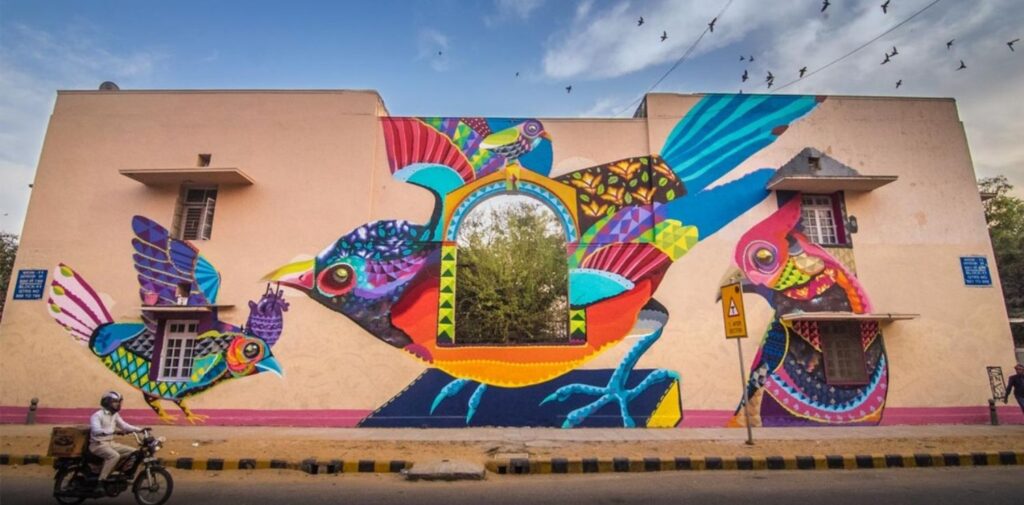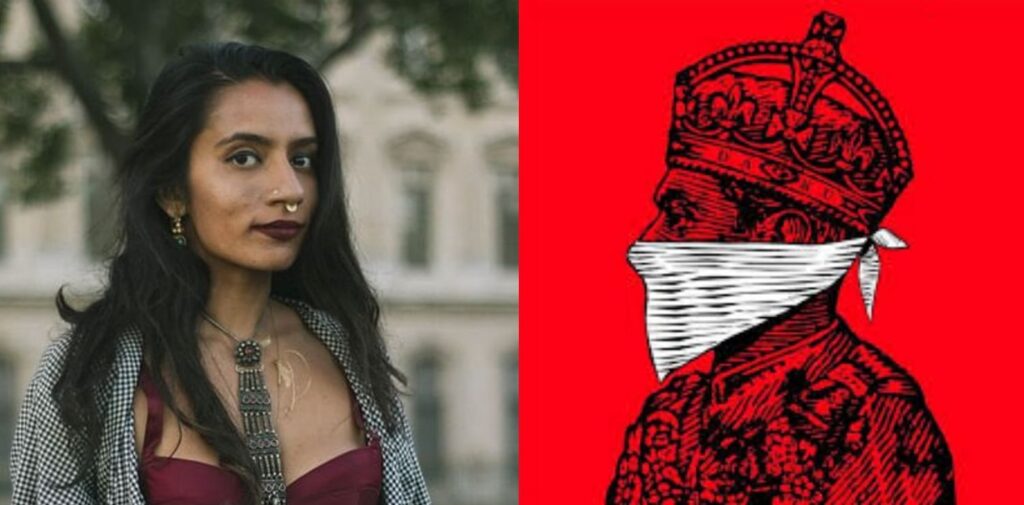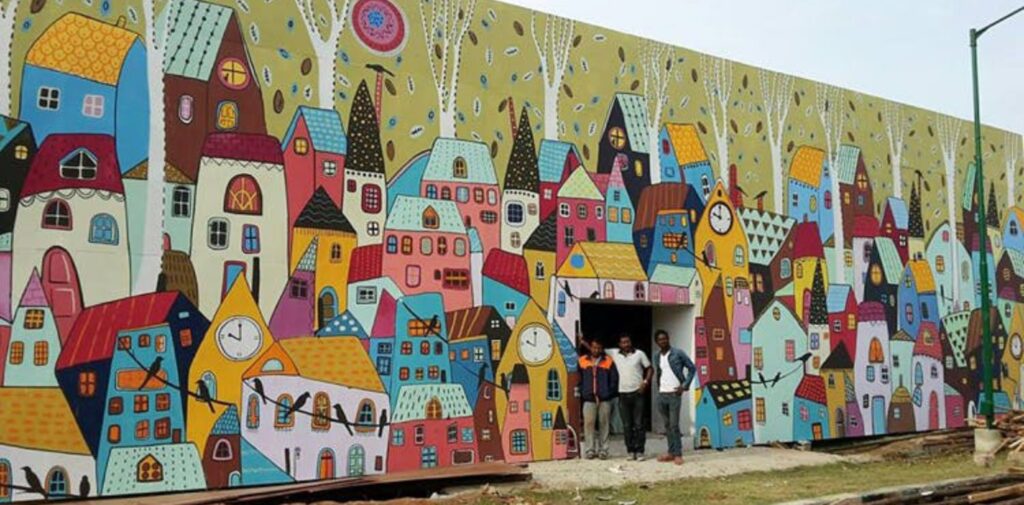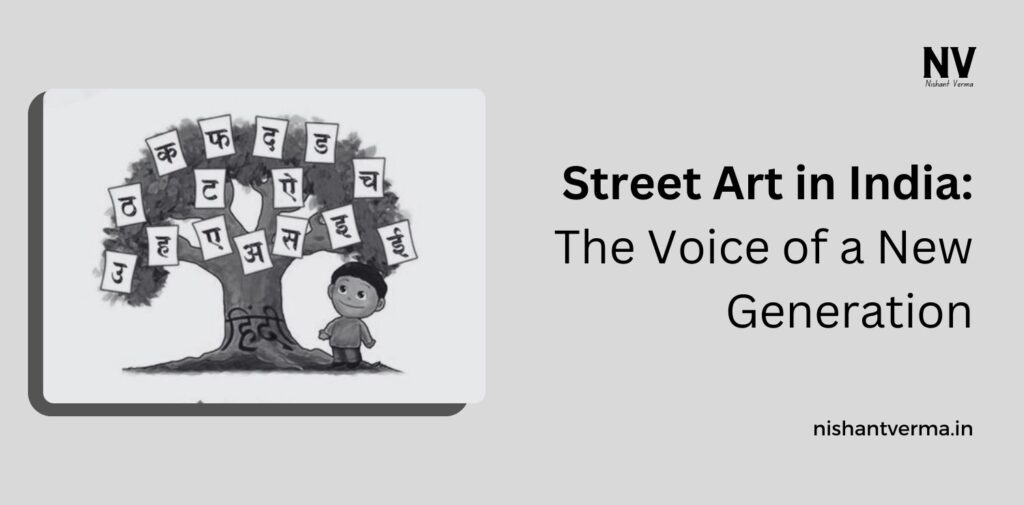Street art has emerged as a powerful medium of expression, particularly in the vibrant urban landscapes of India. This art form, characterized by its dynamic and often provocative nature, serves as a voice for a new generation, reflecting the socio-political issues, cultural narratives, and the everyday experiences of people. From sprawling murals to intricate graffiti, street art in India has transformed the streets into open galleries, challenging conventions and sparking conversations.
What is Street Art?
At its core, street art encompasses various forms of visual art created in public spaces. Unlike traditional art found in galleries or museums, street art is accessible to everyone, inviting people from all walks of life to engage with the artwork. It includes graffiti, murals, stencils, and installations, often with social commentary or political messages. The allure of street art lies in its ability to surprise and provoke thought, turning mundane urban spaces into canvases that reflect the pulse of the community.

The Evolution of Street Art in India
Street art in India has a rich history, but its contemporary form began to gain traction in the early 2000s. Artists started experimenting with spray paint and stencils, inspired by global movements while also infusing local narratives into their work. Cities like Mumbai, Delhi, and Bengaluru became hotspots for street artists, leading to a vibrant scene that continues to evolve.
Influences and Inspirations
Many Indian street artists draw inspiration from their surroundings—urban chaos, cultural heritage, and socio-political issues. Artists such as Banksy and Shepard Fairey have had a significant impact, but Indian artists have also carved out a unique identity that resonates with local communities. They often address themes like gender inequality, environmental degradation, and political corruption, making street art a crucial form of social commentary.
The Role of Street Art in Society
- A Platform for Social Change: Street art serves as a platform for raising awareness about pressing issues. For instance, in Mumbai, the “We the People” mural campaign aimed to highlight the importance of civic responsibility and encourage citizens to participate in democracy. Similarly, artists have tackled topics like mental health and climate change, creating powerful visuals that resonate with the public and inspire dialogue.
- Community Engagement: Beyond individual expression, street art fosters community engagement. Many artists collaborate with local communities to create murals that reflect their collective identity. This collaboration not only beautifies neighbourhoods but also instils a sense of pride and ownership among residents. Projects like “St+Art India” bring together artists and communities to create art that is meaningful and reflective of local culture.

Famous Indian Street Artists
- Daku: Daku is known for his vivid, intricate designs that often incorporate traditional Indian motifs. His work celebrates local culture while addressing contemporary issues. By blending the past with the present, Daku’s art resonates deeply with audiences, inviting them to reflect on their identity.
- Shilo Shiv Suleman: Shilo combines street art with elements of technology and storytelling. Her installations often incorporate themes of feminism and spirituality, challenging societal norms. Shilo’s work is characterized by its enchanting visuals that tell stories, urging viewers to engage with the deeper meanings behind the art.
- Bubbles: Known for his quirky and humorous style, Bubbles uses satire to address social issues. His work often features playful characters and whimsical designs that convey serious messages about consumerism and societal norms. Bubbles’ art stands out for its ability to entertain while prompting reflection.
The Impact of Street Art on Urban Spaces
- Beautification of Cities: One of the most visible impacts of street art is the transformation of urban spaces. What was once dull and neglected walls have become vibrant canvases that attract tourists and locals alike. Cities like Mumbai and Delhi have embraced this trend, turning street art into a key aspect of their cultural identity. The colourful murals and innovative installations have not only beautified neighbourhoods but also enhanced the overall aesthetic appeal of urban environments.
- Tourism and Economic Growth: As street art gains recognition, it has also become a significant draw for tourism. Art walks and guided tours showcase the work of local artists, attracting visitors who are eager to explore the creative side of cities. This influx of tourism has a ripple effect on local economies, providing opportunities for artists, small businesses, and cultural initiatives.
Challenges Faced by Street Artists
Despite its growing acceptance, street art in India is not without challenges. Issues of legality and public perception often complicate the work of artists. While some municipalities have embraced street art, others view it as vandalism, leading to conflicts with authorities. Additionally, the transient nature of street art means that many works are short-lived, as buildings are repainted or demolished, posing a challenge for artists looking to leave a lasting mark.
- The Balance of Expression and Regulation: Navigating the balance between artistic expression and regulatory frameworks remains a contentious issue. Many artists advocate for designated spaces where street art can thrive without fear of censorship or removal. This dialogue between artists and local governments is essential for fostering an environment where street art can flourish and be appreciated as a legitimate form of artistic expression.

The Future of Street Art in India
As street art continues to evolve, it is poised to play an increasingly important role in shaping cultural narratives in India. The rise of social media has amplified the visibility of street artists, allowing their work to reach a global audience. Online platforms enable artists to share their creations, gather support, and connect with like-minded individuals, fostering a sense of community that transcends geographical boundaries.
Innovations and New Directions
Emerging technologies such as augmented reality (AR) and digital projections are also beginning to influence street art. Artists are exploring new mediums and methods to engage audiences, creating interactive experiences that blend the digital with the physical. These innovations promise to keep street art fresh and relevant, appealing to younger generations who are increasingly engaged with technology.
Conclusion: A Vibrant Expression of Identity
Street art in India is more than just a visual spectacle; it is a vibrant expression of identity, culture, and social consciousness. As artists continue to push boundaries and challenge norms, their work reflects the complexities of modern Indian society. Street art serves as a mirror, reflecting the hopes, struggles, and aspirations of a new generation, and inviting all to engage in the conversation. By transforming public spaces into platforms for dialogue, street art ensures that the voice of the people is heard loud and clear, creating a tapestry of stories that enrich the urban landscape. In this way, street art remains not only an artistic endeavour but a vital part of India’s cultural narrative.




